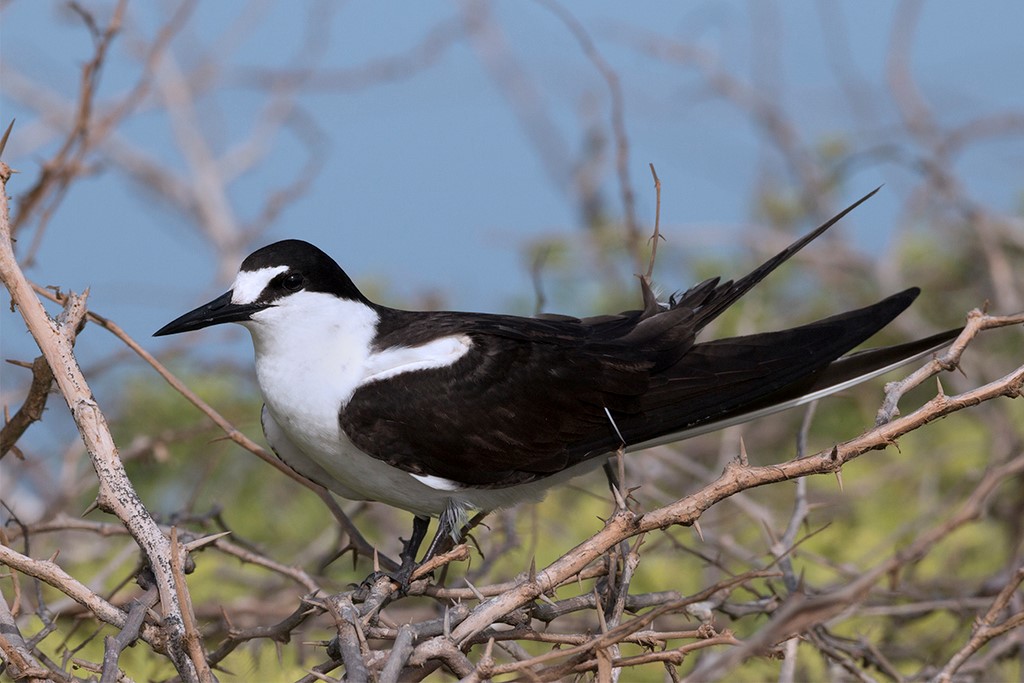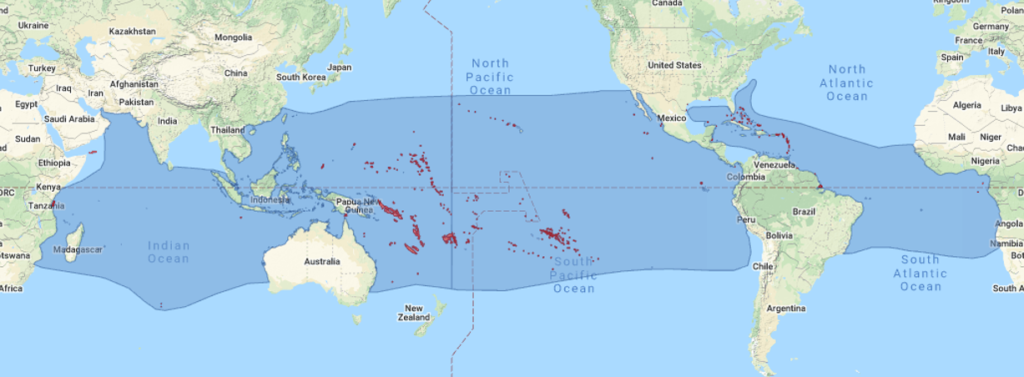Birdfinding.info ⇒ Among the most abundant of seabirds, occurring nearly throughout the tropical oceans. Seasonally common near its nesting islands—including many sites in the West Indies, Seychelles, Indonesia, Australasia, Micronesia, Melanesia, and Polynesia—but otherwise mostly pelagic and therefore rare and sporadic along continental coasts. In the U.S., it is fairly common from July to September in the Gulf Stream north to Hatteras, abundant at the Dry Tortugas from March to September. Also common and often present at Makapu’u Point, Oahu, near its colonies on Moku Manu and Manana.
Sooty Tern
Onychoprion fuscatus
Pantropical. Largely pelagic when not breeding.
Breeding. Breeds in large colonies on islets of the Caribbean, tropical South Atlantic, Indian Ocean (including the Red Sea and Persian Gulf), Indonesian seas, and the full breadth of the Pacific Ocean—but scarce and local in the eastern Pacific from Panama to Ecuador (and likely also to northwestern Peru).
In the Caribbean region, breeds in essentially all island groups, but more abundant and ubiquitous eastward (Bahamas to Lesser Antilles) and more localized elsewhere. In the U.S., approximately 40,000 pairs nest on the Dry Tortugas (March to September), and small numbers nest on islets along the coasts of Texas and Louisiana, and sporadically along the Atlantic Coast north to the Outer Banks of North Carolina.
The Hawaiian population is estimated at approximately 1.4 million pairs, with the largest colonies on Lisianski (~500,000 pairs) and Laysan (~425,000), and smaller but still large colonies on French Frigate Shoals (~150,000), Midway (~100,000), Pearl and Hermes Reefs (~40,000), Kaula (~40,000), Necker (~20,000), Nihoa (~20,000), Kure (~10,000), Gardener Pinnacles (~400), and two islets east of Oahu: Manana (~75,000) and Moku Manu (~15,000). The timing of nesting at these colonies varies, and may begin at nearly any time of year, mainly between November and June.
Movements. Regional populations vary in their annual habits, with some being essentially resident around their breeding areas and others being strongly migratory. For example, telemetry studies have revealed that a large portion of the Caribbean breeding population migrates southeast to the tropical Atlantic offshore from West Africa between October and March.
During the breeding season, in most regions with breeding populations, significant numbers disperse to nearby seas. For example, it is generally present throughout the Gulf of Mexico during the main Caribbean breeding season, March to September, with smaller numbers the Atlantic Gulf Stream waters north to North Carolina mainly from July to September, and a few that wander farther north along the Eastern Seaboard as far as southern New England, exceptionally to Nova Scotia.
Vagrants stray beyond the tropics to temperate seas, especially where there are warm currents such as the Gulf Stream, which often facilitate wanderers reaching western and norther Europe.
Hurricanes sometimes transport dozens of Sooty Terns north to New England and inland across the eastern U.S. to Ontario. Similar waves of storm-blown vagrants have also been noted in southeastern Africa and southern and eastern Asia.
Identification
A mostly pelagic tern that has distinctive, crisply demarcated black-and-white plumage: essentially all-black above and all-white below, with a white forehead and a black eyestripe.
The boundary between the white forehead patch and black eyestripe is angled such that the eyestripe tapers to its narrowest at the bill, and is noticeably broader around the eye, and the white forehead patch narrows to a point above the eye.
On some individuals only the cap is jet-black and the rest of the upperparts are blackish-gray, and exceptional individuals have a paler (sometimes whitish or even white) collar on the nape—and therefore strongly resemble Bridled Tern (see below).
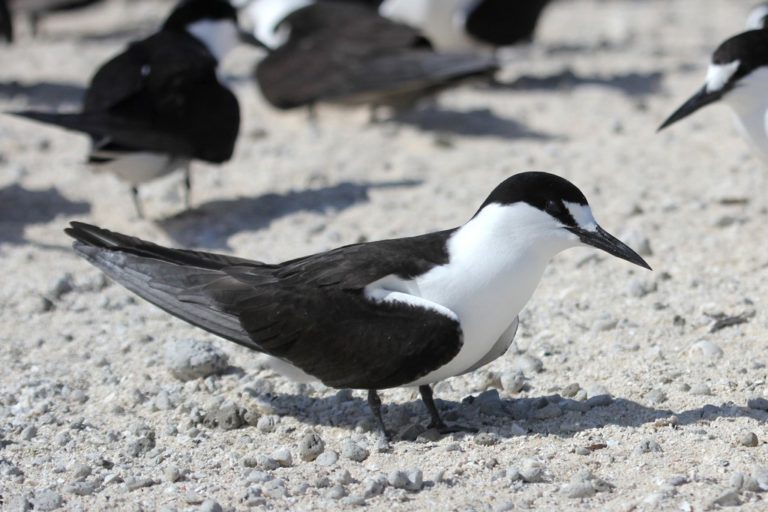
Sooty Tern. (Michaelmas Cay, Queensland, Australia; September 6, 2015.) © Ray Turnbull
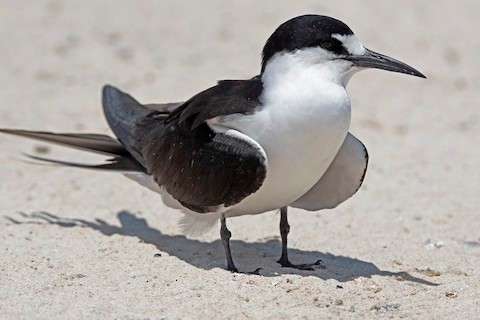
Sooty Tern. (Michaelmas Cay, Queensland, Australia; October 12, 2019.) © Nik Mulconray
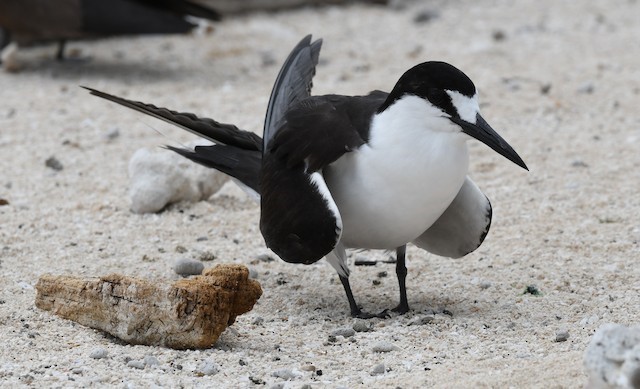
Sooty Tern. (Michaelmas Cay, Queensland, Australia; January 5, 2017.) © Terence Alexander
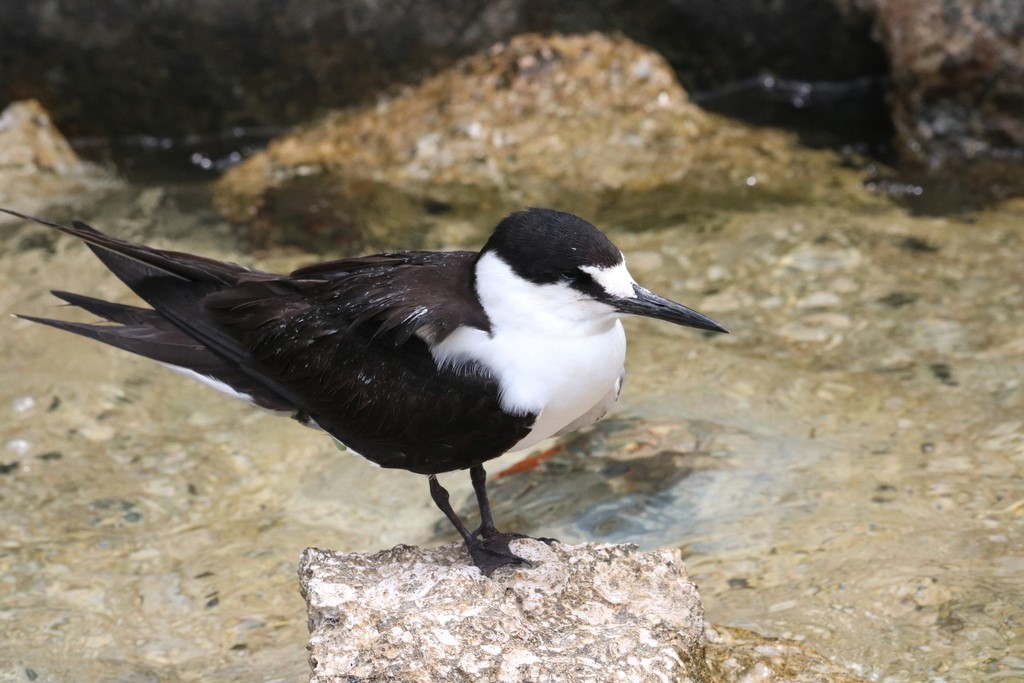
Sooty Tern. (Johnston Atoll; July 8, 2017.) © Peter Xiong
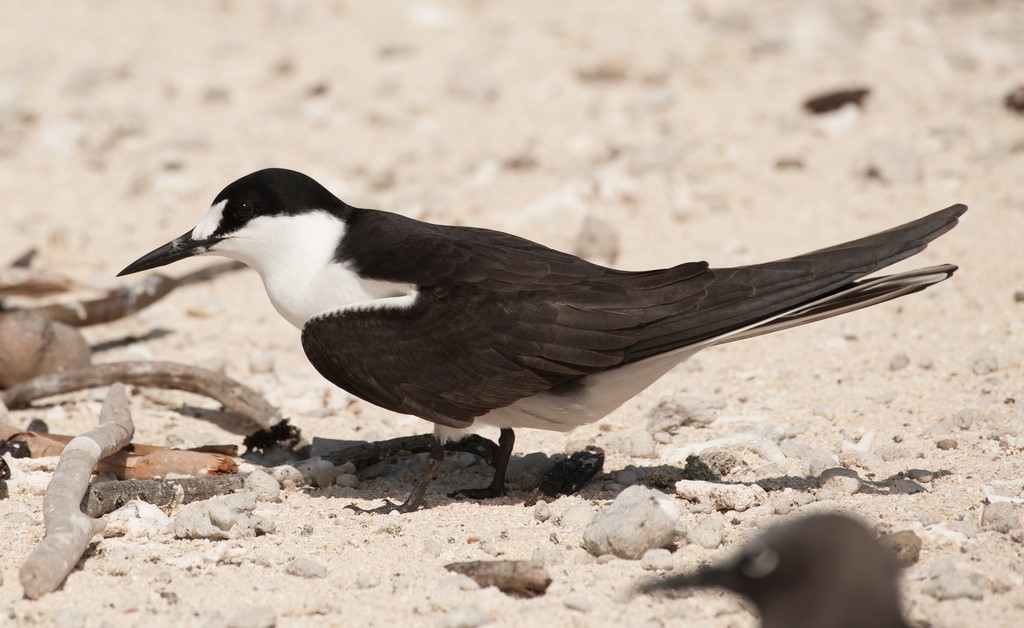
Sooty Tern. (Michaelmas Cay, Queensland, Australia; May 27, 2017.) © Chris Clarke

Sooty Tern. (Michaelmas Cay, Queensland, Australia; September 6, 2015.) © Ray Turnbull
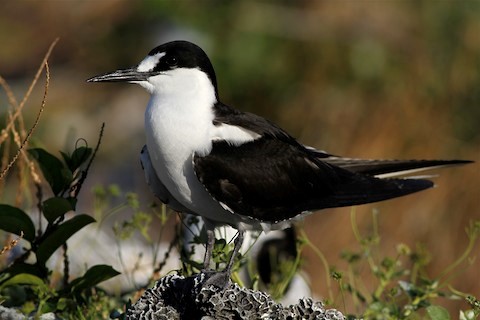
Sooty Tern. (Lady Elliot Island, Queensland, Australia; November 14, 2014.) © Chris Wiley
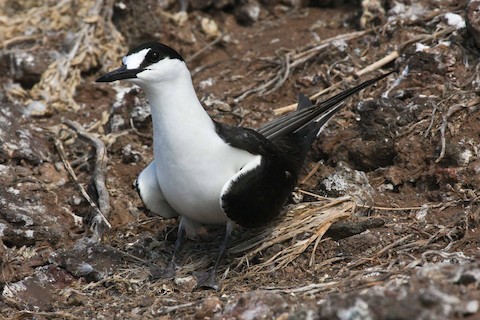
Sooty Tern. (Moku Manu, Oahu, Hawaii; June 26, 2008.) © Eric VanderWerf
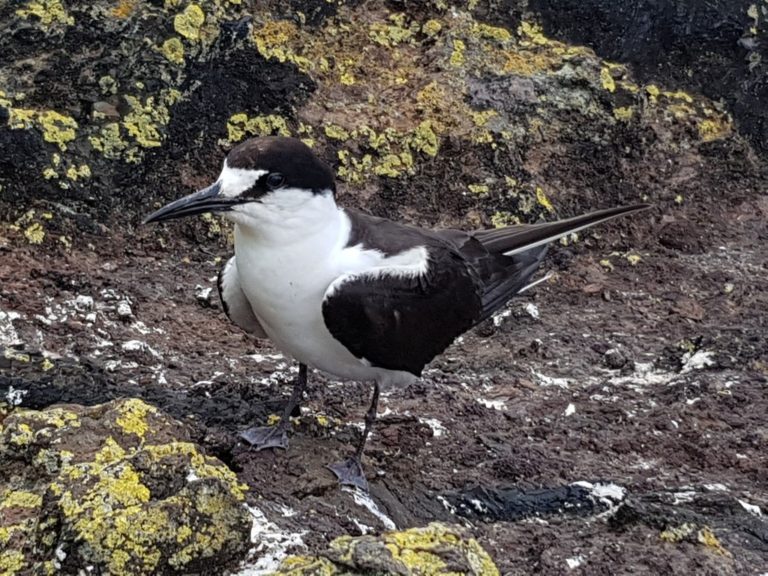
Sooty Tern. (Lord Howe Island, Australia; January 19, 2018.) © Mike Letnic

Sooty Tern showing eyestripe that tapers in width. (Grand Connétable Nature Reserve, French Guiana; June 9, 2008.) © Sylvain Uriot
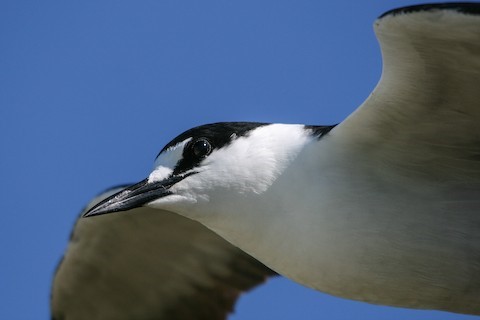
Sooty Tern showing eyestripe that tapers in width. (Île aux Cocos, Rodrigues Island, Mauritius; June 10, 2010.) © Peter Steward
In flight, from above, the upperparts appear essentially all-black or blackish except for the outermost tail feathers and the leading edge of the wing along the shoulder.
From below, the wing linings are white and the flight feathers typically appear blackish-gray—although the primaries sometimes appear paler depending on the angle of view and lighting.
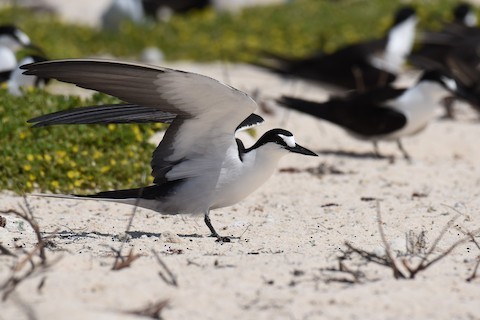
Sooty Tern. (Hogsty Reef, Bahamas; May 22, 2019.) © Hannes Leonard
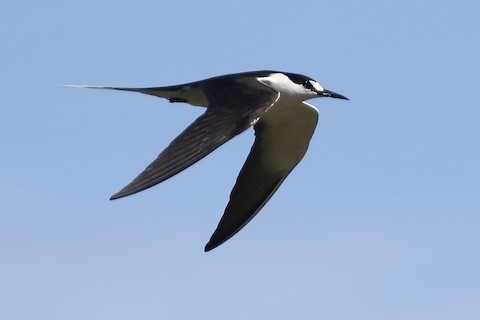
Sooty Tern. (Makapu’u Point, Oahu, Hawaii; January 27, 2020.) © Christopher Escott
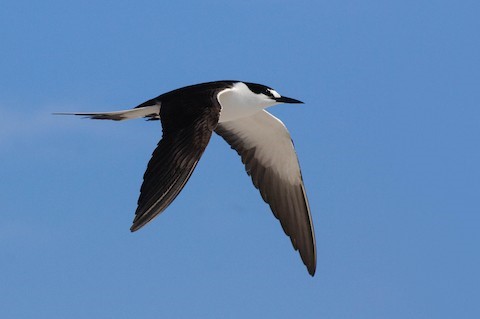
Sooty Tern. (Garden Key, Dry Tortugas National Park, Florida; March 16, 2007.) © Gerrit Vyn
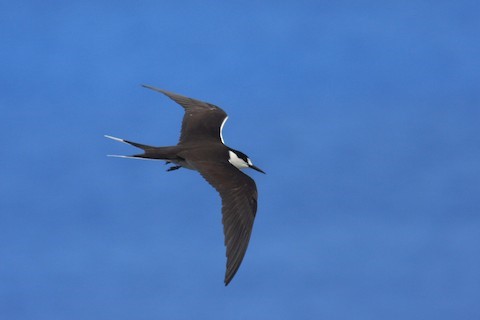
Sooty Tern. (Aride, Seychelles; October 22, 2019.) © Oscar Campbell

Sooty Tern. (Garden Key, Dry Tortugas National Park, Florida; April 28, 2013.) © Michael Todd

Sooty Tern. (Michaelmas Cay, Queensland, Australia; November 19, 2017.) Anonymous eBirder
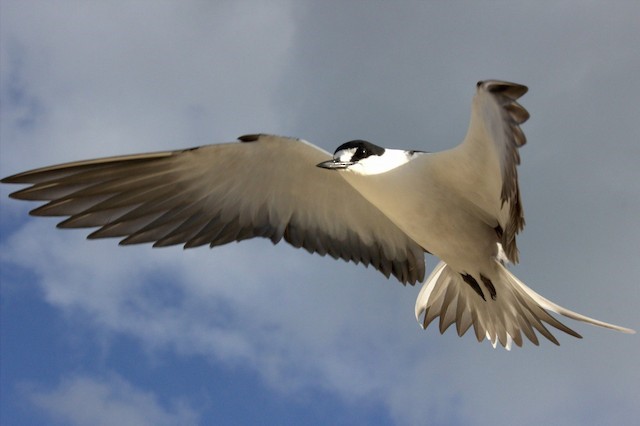
Sooty Tern. (Lord Howe Island, Australia; October 15, 2017.) © Edward Smith
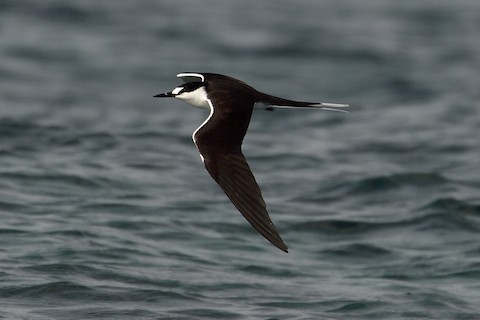
Sooty Tern. (Baby Beach, Aruba; August 30, 2020.) © Michiel Oversteegen
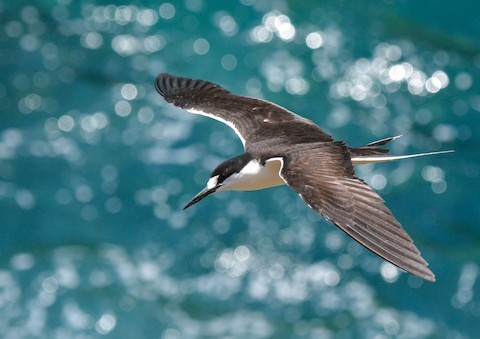
Sooty Tern, showing jet-black cap and slightly paler mantle. (Little Tobago Island, Trinidad & Tobago; May 8, 2014.) © William Stephens

Sooty Tern. (Little Tobago Island, Trinidad & Tobago; June 19, 2018.) © Adam Bowley
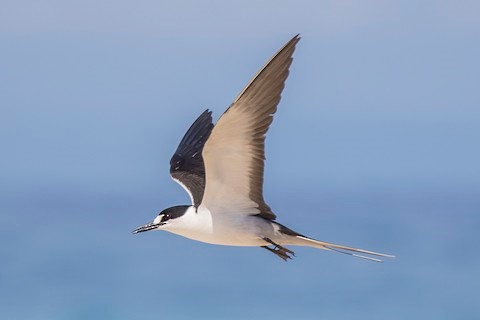
Sooty Tern. (Michaelmas Cay, Queensland, Australia; January 17, 2020.) © Matthew Kwan
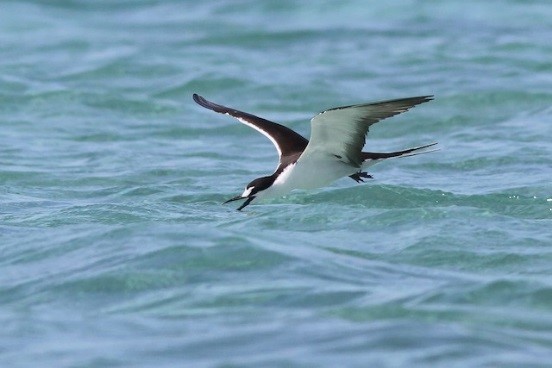
Sooty Tern. (Garden Key, Dry Tortugas National Park, Florida; May 4, 2012.) © Michael O’Brien

Sooty Tern. (Norfolk Island, Australia; December 1, 2015.) © David and Kathy Cook

Sooty Tern. (Dry Tortugas National Park; February 13, 2020.) © Jonathan Irons

Sooty Tern, in flight with tail folded tight. (Motu Tapu, Kiribati; February 22, 2019.) © George Henry Stirrett

Sooty Tern, in flight with tail folded tight. (Michaelmas Cay, Queensland, Australia; December 2, 2017.) © Ian Davies
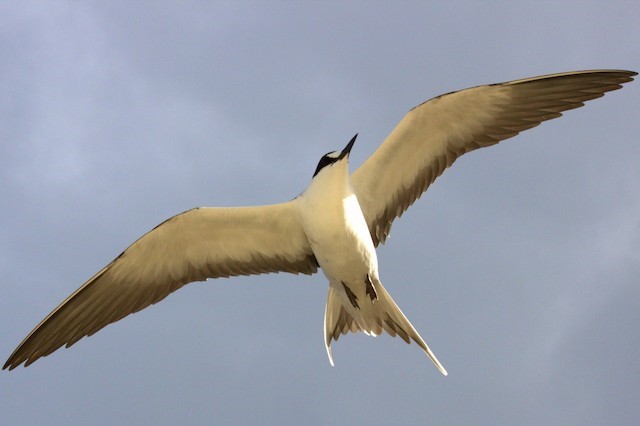
Sooty Tern. (Lord Howe Island, Australia; October 15, 2017.) © Edward Smith
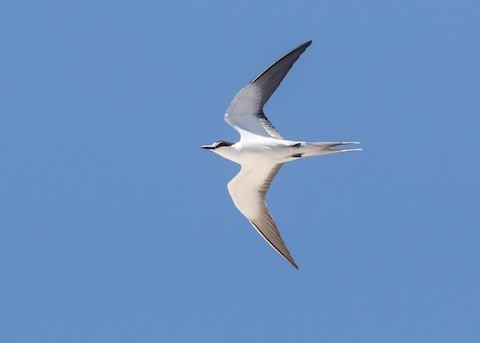
Sooty Tern. (Garden Key, Dry Tortugas National Park, Florida; April 25, 2017.) © Darren Clark
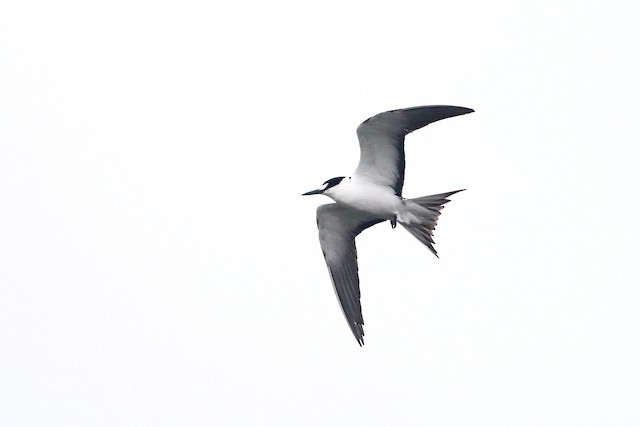
Sooty Tern. (Lafayette Heritage Trail Park, Leon County, Florida; September 11, 2017.) © Jeff O’Connell
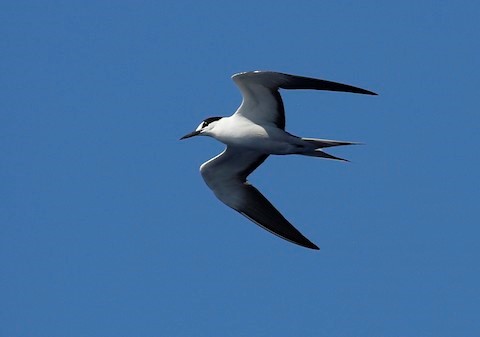
Sooty Tern. (Middle Bank, Northwest Chain, Hawaii; October 15, 2019.) © Laura Keene
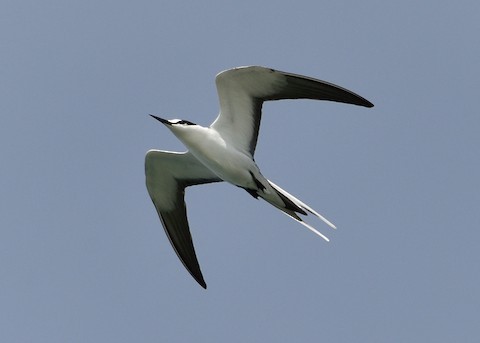
Sooty Tern. (Baby Beach, Aruba; August 30, 2020.) © Michiel Oversteegen
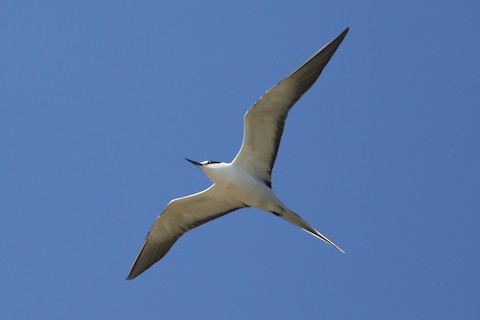
Sooty Tern, in flight with tail folded tight. (Makapu’u Point, Oahu, Hawaii; January 27, 2020.) © Christopher Escott
Immature Plumages. Juveniles begin all-blackish with fine white spots and scaling on the back and wings. They lighten rapidly, turning browner above and white or whitish on the underwings and lower belly before molting into adult-like plumage.
Being mostly brown, immatures can appear similar to young Brown Noddies—which differ in having all-dark wings and wedge-shaped tails.

Sooty Tern, juvenile. (Michaelmas Cay, Queensland, Australia; October 19, 2002.) © Paul Suchanek
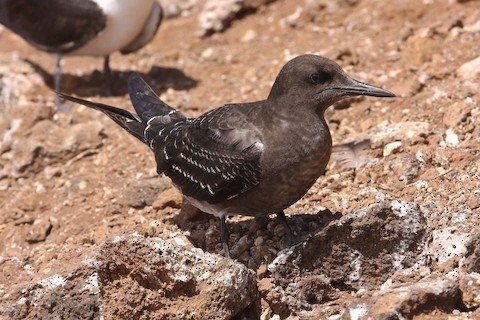
Sooty Tern, juvenile. (Moku Manu, Oahu, Hawaii; June 26, 2008.) © Eric VanderWerf

Sooty Tern, juvenile. (Aride, Seychelles; October 22, 2019.) © Oscar Campbell
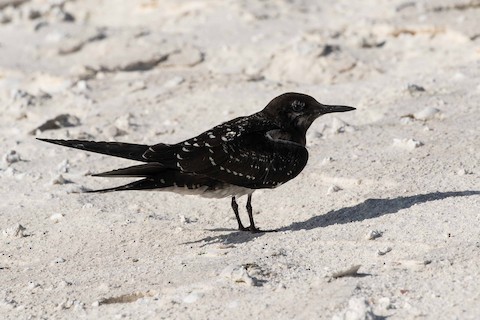
Sooty Tern, juvenile. (Motu Tapu, Kiribati; August 18, 2019.) © Eric VanderWerf
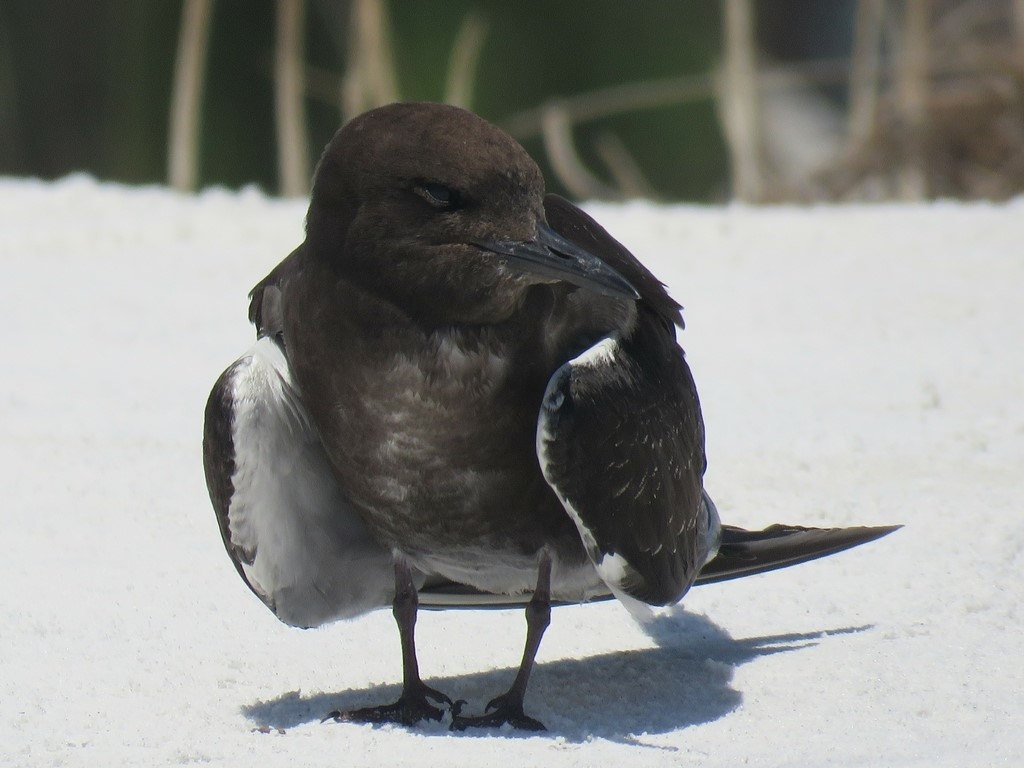
Sooty Tern, juvenile. (Crooked Island, Florida; June 24, 2017.) © Kevin Christman
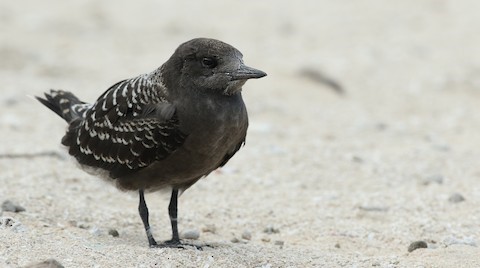
Sooty Tern, juvenile. (Michaelmas Cay, Queensland, Australia; March 1, 2016.) © Luke Seitz
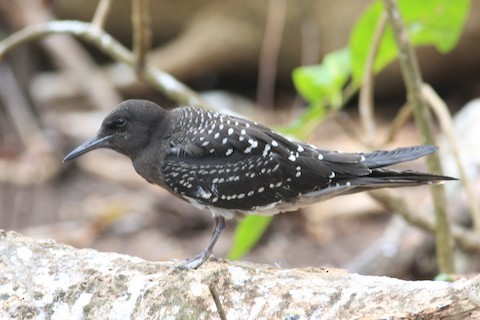
Sooty Tern, juvenile. (Aride, Seychelles; October 22, 2019.) © Oscar Campbell

Sooty Tern, juvenile. (Lord Howe Island, Australia; February 6, 2013.) © Donna Nagiello
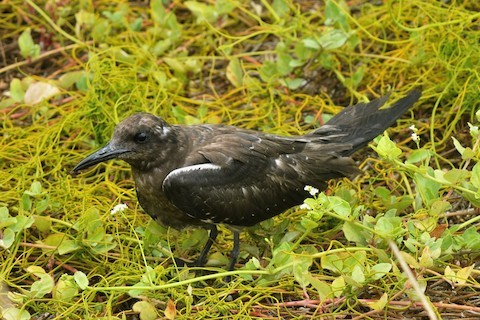
Sooty Tern, juvenile. (Cook Island, Kiribati; November 5, 2016.) © John Doty
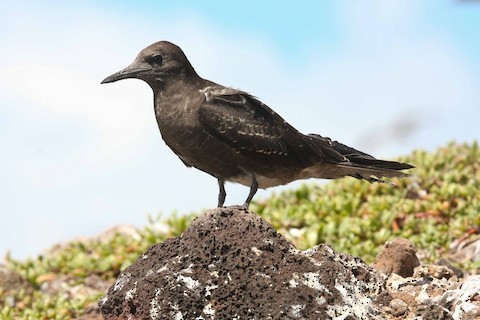
Sooty Tern, juvenile. (Moku Manu, Oahu, Hawaii; June 26, 2008.) © Eric VanderWerf

Sooty Tern, immature. (Kung Chau Island, Hong Kong; June 3, 2019.) © Matthew Kwan
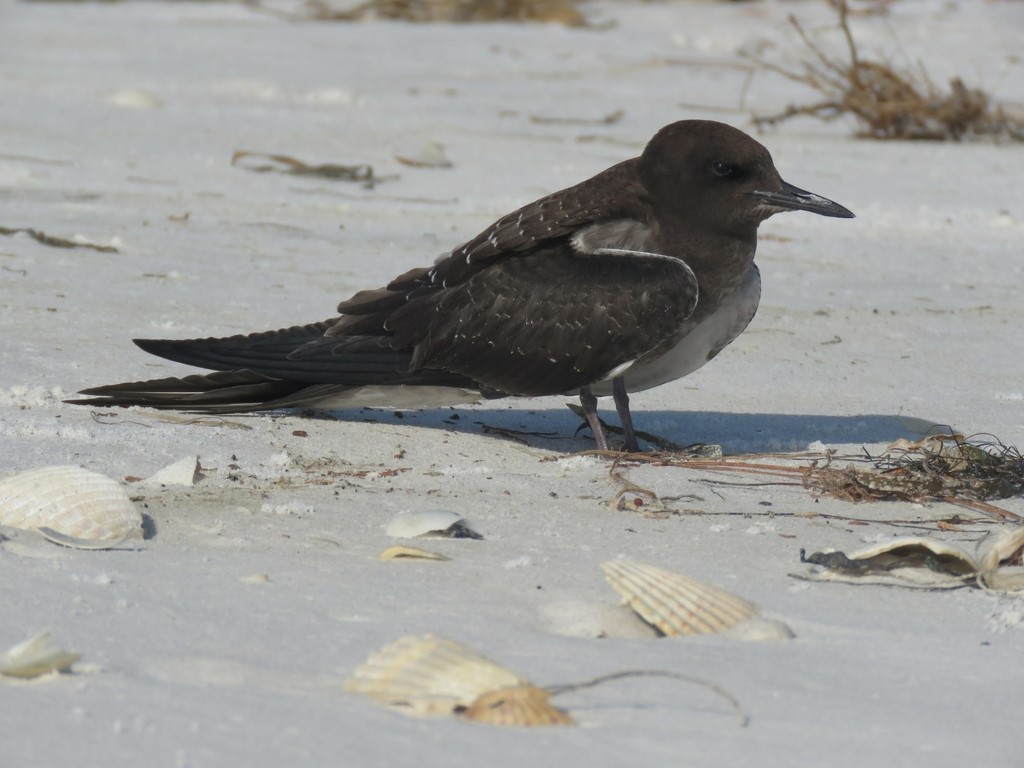
Sooty Tern, juvenile. (Crooked Island, Florida; June 24, 2017.) © Kevin Christman
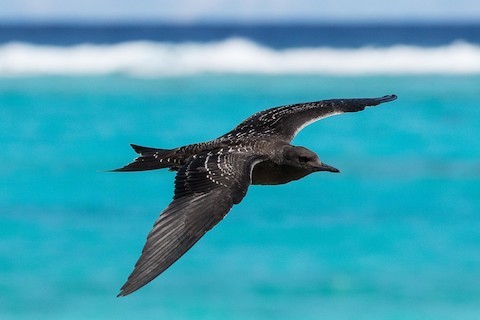
Sooty Tern, juvenile. (Eastern Island, Midway Atoll National Wildlife Refuge, Hawaii; August 23, 2017.) © Eric VanderWerf
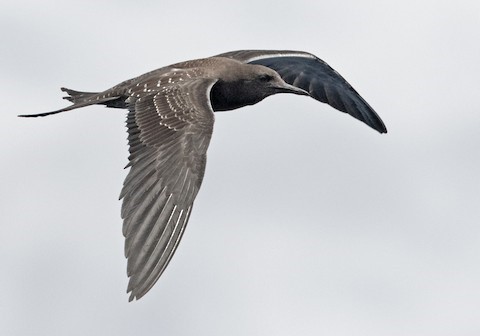
Sooty Tern, juvenile. (Tinhosa Grande, Príncipe; September 23, 2017.) © Lars Petersson
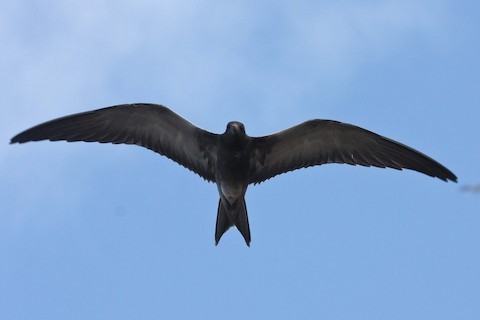
Sooty Tern, juvenile. (Moku Manu, Oahu, Hawaii; June 26, 2008.) © Eric VanderWerf
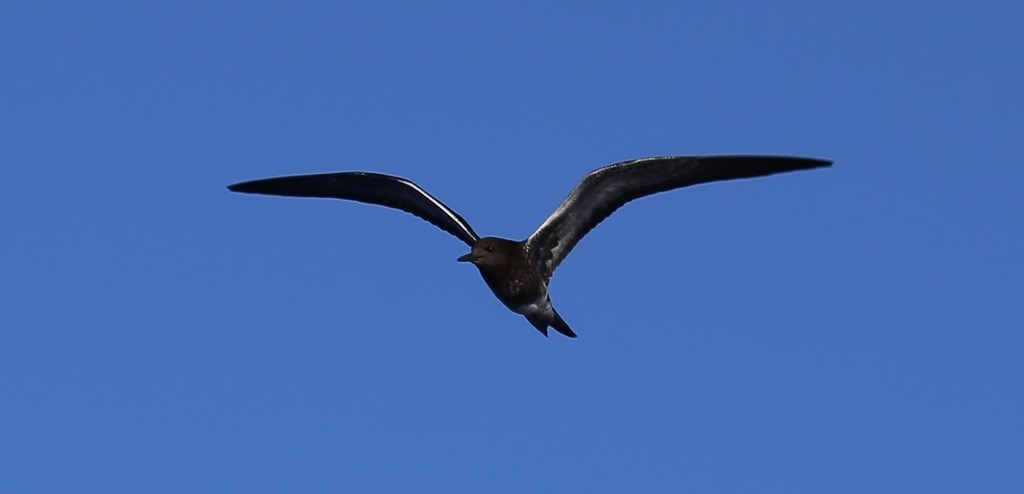
Sooty Tern, juvenile. (Mathew Island, New Caledonia; August 2, 2017.) © Clinton Duffy

Sooty Tern, juvenile. (Flat Rock, Ballina, New South Wales, Australia; February 7, 2020.) © Steven McBride
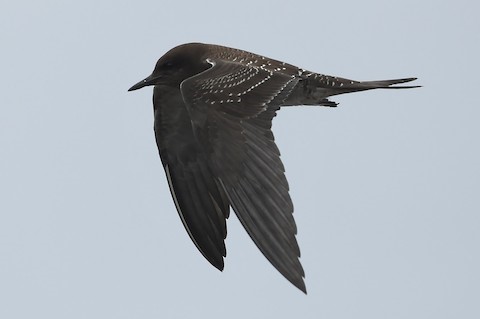
Sooty Tern, juvenile. (Flat Rock, Ballina, New South Wales, Australia; February 7, 2020.) © Steven McBride
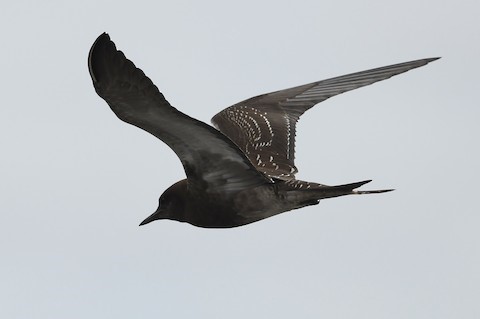
Sooty Tern, juvenile. (Flat Rock, Ballina, New South Wales, Australia; February 7, 2020.) © Steven McBride
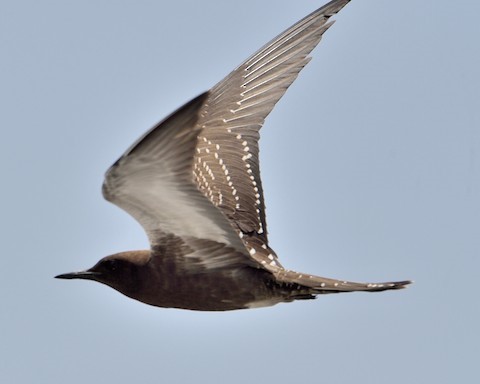
Sooty Tern, juvenile. (Baby Beach, Aruba; August 30, 2020.) © Michiel Oversteegen

Sooty Tern, juvenile. (Lake Norman, North Carolina; September 17, 2018.) © Rob Van Epps
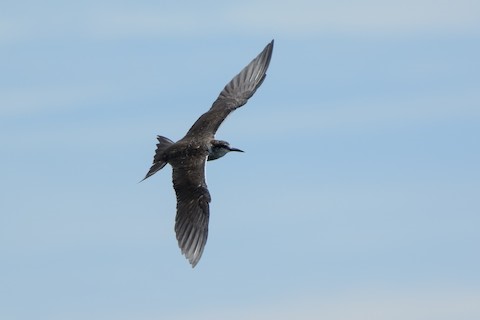
Sooty Tern, immature. (Offshore from Samut Sakhon, Thailand; September 7, 2020.) © Vatcharavee Sriprasertsil
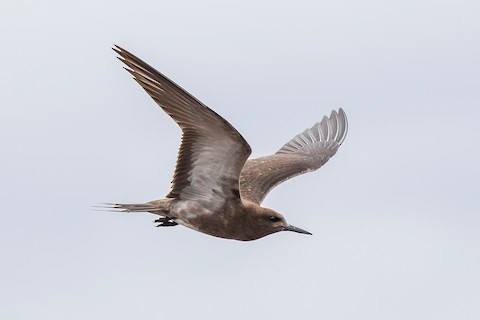
Sooty Tern, immature. (Kung Chau Island, Hong Kong; June 3, 2019.) © Matthew Kwan
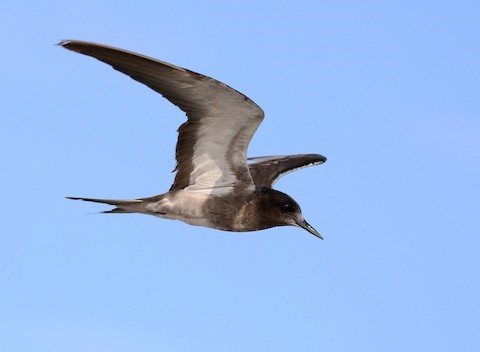
Sooty Tern, immature. (Beiji Islands, Zhejiang, China; July 31, 2016.) © 浙江 重要鸟讯汇整
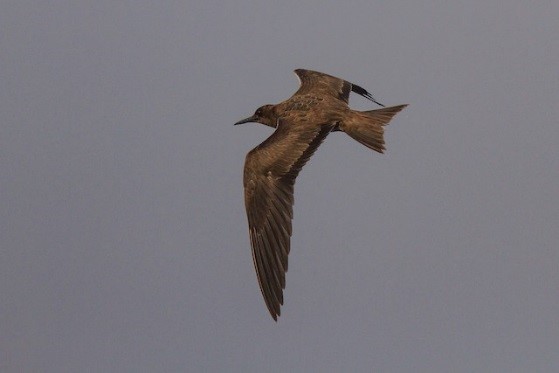
Sooty Tern, immature. (Offshore from Fujairah, United Arab Emirates; June 28, 2011.) © Tommy Pederson
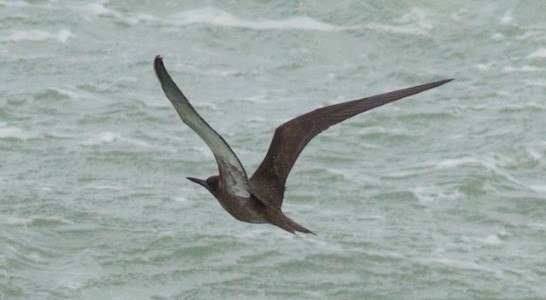
Sooty Tern, immature. (Lake Worth Beach Park, Florida; October 3, 2017.) © Kenny Miller
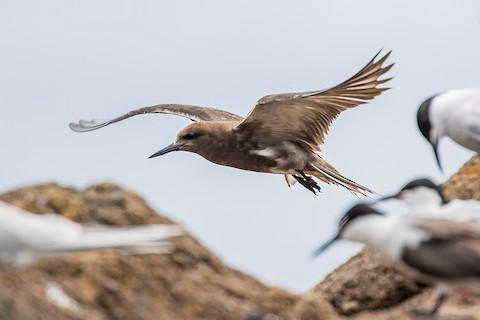
Sooty Tern, immature. (Kung Chau Island, Hong Kong; June 3, 2019.) © Matthew Kwan
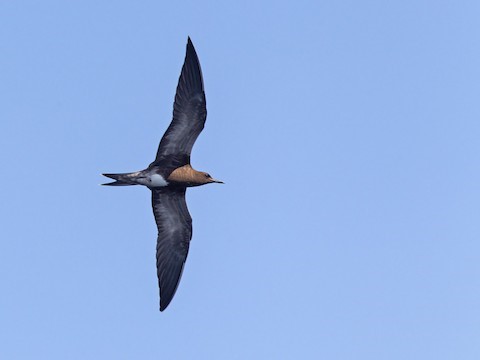
Sooty Tern, immature. (Offshore from Durban, KwaZulu-Natal, South Africa; November 22, 2013.) © Niall D. Perrins
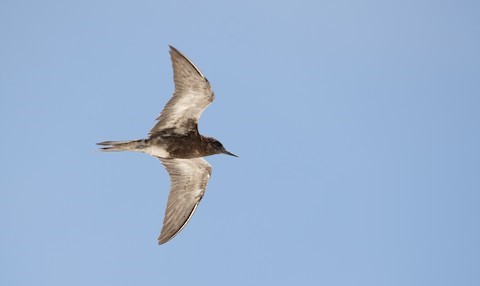
Sooty Tern, immature. (Michaelmas Cay, Queensland, Australia; December 2, 2017.) © Ian Davies

Sooty Tern, immature with mostly whitish underparts. (Offshore from Samut Sakhon, Thailand; September 7, 2020.) © Vatcharavee Sriprasertsil

Sooty Tern, immature with mostly whitish underparts. (Offshore from Samut Sakhon, Thailand; September 7, 2020.) © Wich’yanan Limparungpatthanakij
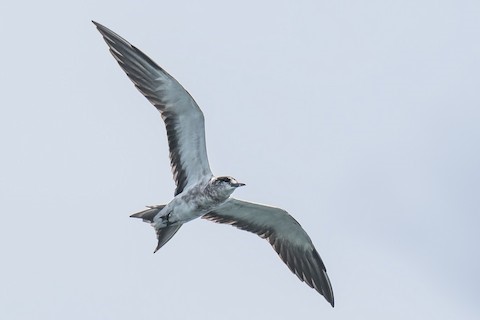
Sooty Tern, immature with mostly whitish underparts. (Offshore from Samut Sakhon, Thailand; September 7, 2020.) © Wich’yanan Limparungpatthanakij
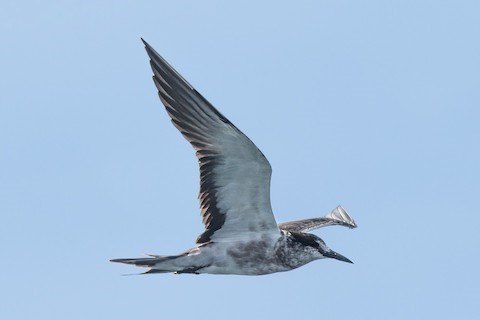
Sooty Tern, immature with mostly whitish underparts. (Offshore from Samut Sakhon, Thailand; September 7, 2020.) © Wich’yanan Limparungpatthanakij
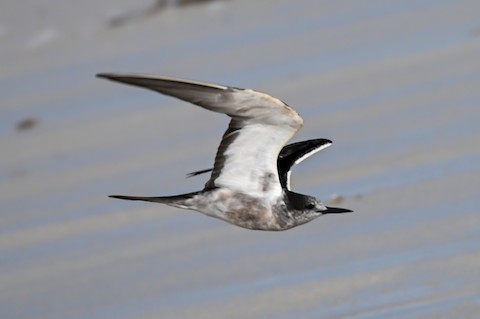
Sooty Tern, subadult. (Guilderton, Western Australia; May 25, 2020.) © Geoffrey Groom

Sooty Tern, immature. (Offshore from Fujairah, United Arab Emirates; June 28, 2011.) © Tommy Pederson
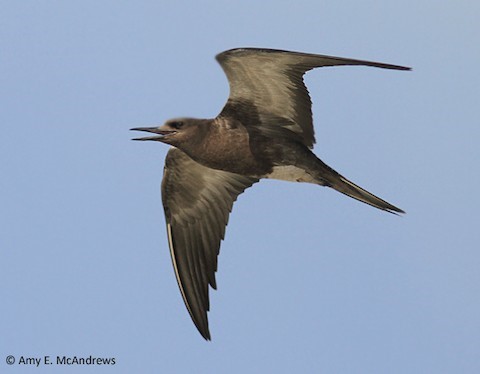
Sooty Tern, immature. (Isla Perez, Arrecife Alacranes National Park, Yucatán, Mexico; June 14, 2014.) © Amy E. McAndrews
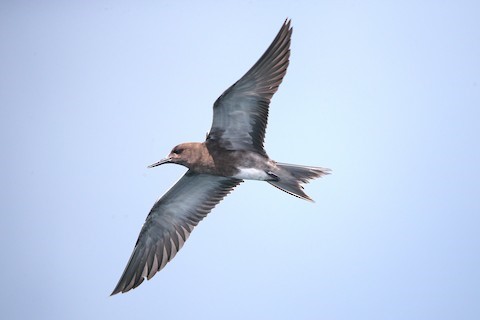
Sooty Tern, immature. (Kung Chau Island, Hong Kong; June 7, 2019.) © Roman Lo
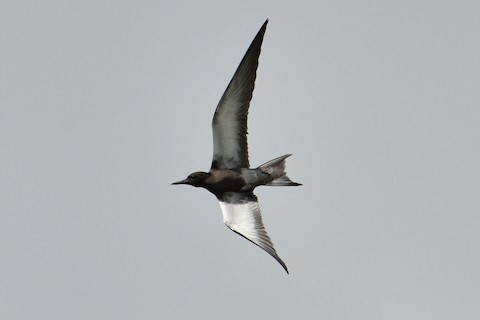
Sooty Tern, juvenile. (Baby Beach, Aruba; August 30, 2020.) © Michiel Oversteegen
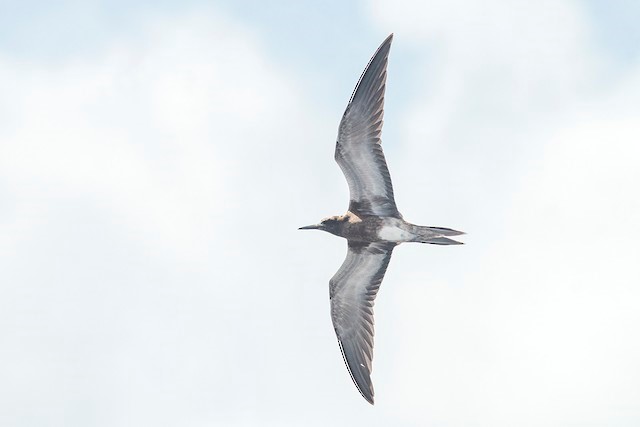
Sooty Tern, immature with partly whitish underparts. (Offshore from Kauai, Hawaii; October 6, 2017.) © Bernardo Alps

Sooty Tern, immature with partly whitish underparts. (Offshore from Fujairah, United Arab Emirates; June 28, 2011.) © Tommy Pederson
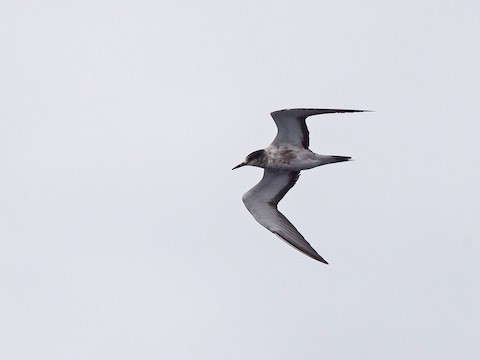
Sooty Tern, immature with mostly whitish underparts. (Offshore from Durban, KwaZulu-Natal, South Africa; October 25, 2014.) © Niall D. Perrins

Sooty Tern, juveniles. (Michaelmas Cay, Queensland, Australia; August 13, 2017.) © Steve Percival
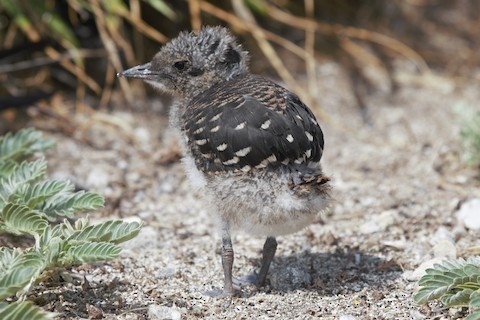
Sooty Tern, nestling. (Eastern Island, Midway Atoll National Wildlife Refuge, Hawaii; June 28, 2019.) © Jonathan Plissner
Cf. Bridled Tern. Sooty and Bridled Terns occur together in all of the tropical oceans, and are more similar than many illustrations suggest. In general, Sooty Tern has mostly uniform blackish upperparts, whereas Bridled has a black cap and gray back. However, both have enough internal variation that some individuals of one species could pass for the other. When the neck is not extended, some dark Bridled can appear to have all-black upperparts like a typical Sooty, and the palest Sooties have a black cap, a dark-gray back, and a whitish collar—just like a typical Bridled.
Finally, when seen in flight, the underwing pattern is usually reliable. On Sooty the undersides of all the flight feathers usually appear blackish throughout, whereas Bridled has a blackish trailing edge and outer primaries, but the rest of the primaries are either whitish or gray or mixed, and rarely appear all-blackish.
The most consistent difference is the shape of the white patch on the forehead. Sooty’s white patch fully covers the forehead and ends just above the eye or slightly behind it, whereas Bridled has a thin white “visor” with white brow-stripes that extend well past the eyes. More specifically, on Sooty the boundary between the white forehead patch and black eyestripe is angled such that the eyestripe is narrow at the bill, then broadens around the eye and the white patch narrows to a point above the eye, whereas Bridled’s eyestripe is essentially uniform in width.
Cf. Black and White-winged Terns. Immature Sooty Terns are mostly dark-brown (sooty) with a wide range of variation, as are breeding adult Black and White-winged Terns, which also vary dramatically as they molt into and out of their dark breeding plumages.
Even with the variations of molt, the shading of the tail area (i.e., the tail plus upper and undertail coverts) relative to the back and belly usually provides consistent indications. On immature Sooty Tern, the upperside of the tail and rump are always dark, and the undersides are usually concolor—i.e., the undertail and lower belly lighten together. On Black Tern, the upperside of the tail and rump are usually medium-gray, concolor with the back, and the undersides are medium to pale-gray—while the lower belly changes from white to black or mixed. On White-winged Tern, the upperside and underside of the tail, rump, and coverts are always white—while the back changes from gray to black, etc., and the lower belly changes from black to white.
Notes
Polytypic species consisting of eight recognized subspecies.
References
Alderfer, J., and J.L. Dunn. 2014. National Geographic Complete Birds of North America. National Geographic Society, Washington, D.C.
Ascanio, D., G.A. Rodriguez, and R. Restall. 2017. Birds of Venezuela. Christopher Helm, London.
BirdLife International. 2018. Onychoprion fuscatus. The IUCN Red List of Threatened Species 2018: e.T22694740A132571340. https://dx.doi.org/10.2305/IUCN.UK.2018-2.RLTS.T22694740A132571340.en. (Accessed December 4, 2020.)
Brazil, M. 2009. Birds of East Asia. Princeton University Press.
eBird. 2020. eBird: An online database of bird distribution and abundance. Cornell Lab of Ornithology, Ithaca, N.Y. http://www.ebird.org. (Accessed December 4, 2020.)
Fagan, J., and O. Komar. 2016. Peterson Field Guide to the Birds of Northern Central America. Houghton Mifflin Harcourt, New York.
ffrench, R. 2012. A Guide to the Birds of Trinidad & Tobago (Third Edition). Cornell University Press.
Garcia-del-Rey, E. 2011. Field Guide to the Birds of Macaronesia: Azores, Madeira, Canary Islands, Cape Verde. Lynx Editions, Barcelona.
Garrigues, R., and R. Dean. 2014. The Birds of Costa Rica: A Field Guide (Second Edition). Cornell University Press.
Harrison, P. 1983. Seabirds: An Identification Guide. Houghton Mifflin, Boston.
Hollom, P.A.D., R.F. Porter, S. Christensen, and I. Willis. 1988. Birds of the Middle East and North Africa. T & AD Poyser, Calton, England.
Howell, S.N.G. and S.W. Webb. 1995. A Guide to the Birds of Mexico and Northern Central America. Oxford University Press, Oxford.
Howell, S.N.G., and K. Zufelt. 2019. Oceanic Birds of the World. Princeton University Press.
Kirwan, G.M., A. Levesque, M. Oberle, and C.J. Sharpe. 2019. Birds of the West Indies. Lynx Edicions, Barcelona.
Lee, D.S., and W.A. Mackin. 2008. Sooty Tern. West Indian Breeding Seabird Atlas, http://www.wicbirds.net/sote.html. (Accessed December 4, 2020.)
McMullan, M., and T. Donegan. 2014, Field Guide to the Birds of Colombia (Second Edition). Fundación Proaves de Colombia, Bogotá.
Mullarney, K., L. Svensson, D. Zetterström, and P.J. Grant. 1999. Birds of Europe. Princeton University Press.
Pratt, H.D., P.L. Bruner, and D.G. Berrett. 1987. A Field Guide to the Birds of Hawaii and the Tropical Pacific. Princeton University Press.
Pyle, R.L., and P. Pyle. 2017. The Birds of the Hawaiian Islands: Occurrence, History, Distribution, and Status. Version 2 (January 1, 2017). http://hbs.bishopmuseum.org/birds/rlp-monograph/. B.P. Bishop Museum, Honolulu, Hawaii.
Raffaele, H., J. Wiley, O. Garrido, A. Keith, and J. Raffaele. 1998. A Guide to the Birds of the West Indies. Princeton University Press.
Raine, H., and A.F. Raine. 2020. ABA Field Guide to the Birds of Hawai’i. Scott & Nix, Inc., New York.
Ridgely, R.S., and P.J. Greenfield. 2001. The Birds of Ecuador: Field Guide. Cornell University Press, Ithaca, N.Y.
Ridgely, R.S., and J.A. Gwynne. 1989. A Guide to the Birds of Panama (Second Edition). Princeton University Press.
Robson, C. 2002. Birds of Thailand. Princeton University Press.
Schulenberg, T.S., D.F. Stotz, D.F. Lane, J.P. O’Neill, and T.A. Parker. 2007. Birds of Peru. Princeton University Press.
Sibley, D.A. 2000. The Sibley Guide to Birds. Alfred A. Knopf. New York.
Sinclair, I., P. Hockey, W. Tarboton, and P. Ryan. 2011. Birds of Southern Africa (Fourth Edition). Random House Struik (Pty) Ltd. Cape Town, South Africa.
Stiles, F.G., A.F. Skutch, and D. Gardner. 1989. A Guide to the Birds of Costa Rica. Cornell University Press.
van Perlo, B. 1999. Birds of Southern Africa. Princeton University Press.
van Perlo, B. 2002. Birds of Western and Central Africa. Princeton University Press.
van Perlo, B. 2009. A Field Guide to the Birds of Brazil. Oxford University Press.
Wells, J.V., and A.C. Wells. 2017. Birds of Aruba, Bonaire, and Curaçao. Cornell University Press.
Xeno-Canto. 2020. Sooty Tern – Onychoprion fuscatus. https://www.xeno-canto.org/species/Onychoprion-fuscatus. (Accessed December 4, 2020.)

